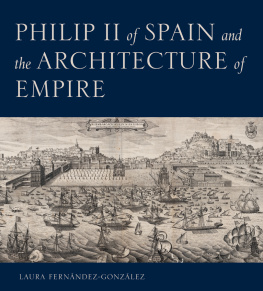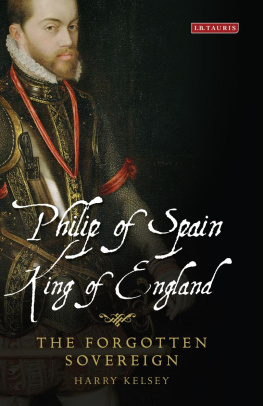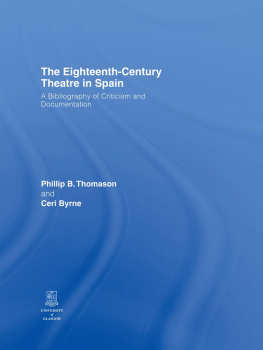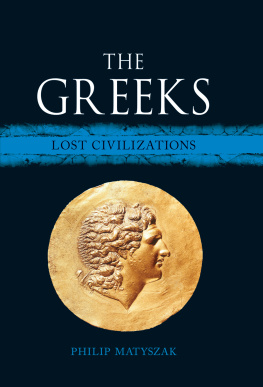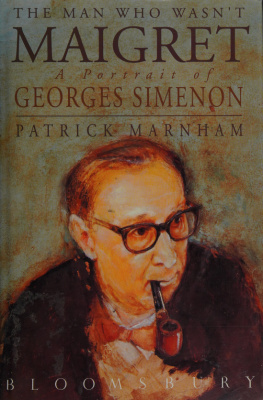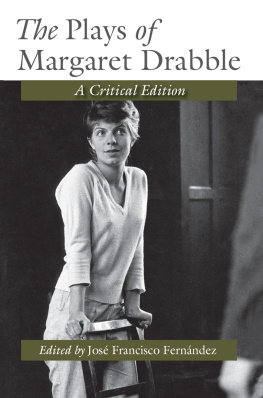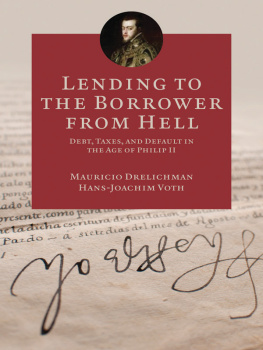Laura Fernndez-Gonzlez - Philip II of Spain and the Architecture of Empire
Here you can read online Laura Fernndez-Gonzlez - Philip II of Spain and the Architecture of Empire full text of the book (entire story) in english for free. Download pdf and epub, get meaning, cover and reviews about this ebook. year: 2021, publisher: Pennsylvania State University Press, genre: Romance novel. Description of the work, (preface) as well as reviews are available. Best literature library LitArk.com created for fans of good reading and offers a wide selection of genres:
Romance novel
Science fiction
Adventure
Detective
Science
History
Home and family
Prose
Art
Politics
Computer
Non-fiction
Religion
Business
Children
Humor
Choose a favorite category and find really read worthwhile books. Enjoy immersion in the world of imagination, feel the emotions of the characters or learn something new for yourself, make an fascinating discovery.
- Book:Philip II of Spain and the Architecture of Empire
- Author:
- Publisher:Pennsylvania State University Press
- Genre:
- Year:2021
- Rating:3 / 5
- Favourites:Add to favourites
- Your mark:
- 60
- 1
- 2
- 3
- 4
- 5
Philip II of Spain and the Architecture of Empire: summary, description and annotation
We offer to read an annotation, description, summary or preface (depends on what the author of the book "Philip II of Spain and the Architecture of Empire" wrote himself). If you haven't found the necessary information about the book — write in the comments, we will try to find it.
Philip II of Spain and the Architecture of Empire — read online for free the complete book (whole text) full work
Below is the text of the book, divided by pages. System saving the place of the last page read, allows you to conveniently read the book "Philip II of Spain and the Architecture of Empire" online for free, without having to search again every time where you left off. Put a bookmark, and you can go to the page where you finished reading at any time.
Font size:
Interval:
Bookmark:

PHILIP II of SPAIN and the ARCHITECTURE of EMPIRE

Library of Congress Cataloging-in-Publication Data
Names: Fernndez-Gonzlez, Laura, author.
Title: Philip II of Spain and the architecture of empire / Laura Fernandez-Gonzalez.
Description: University Park, Pennsylvania : The Pennsylvania State University Press, [2021] | Includes bibliographical references and index.
Summary: Explores the architectural and artistic projects of Philip II of Spain, placing them in the wider context of the peninsular, European, and transoceanic Iberian dominionsProvided by publisher.
Identifiers: LCCN 2020051802 | ISBN 9780271087245 (cloth)
Subjects: LCSH: Philip II, King of Spain, 15271598. | ArchitectureSpainHistory16th century. | Architecture and stateSpainHistory16th century. | Architecture and societySpainHistory16th century. | SpainKings and rulersDwellingsHistory16th century. | SpainHistoryPhilip II, 15561598.
Classification: LCC NA1305 .F465 2021 | DDC 720.94609/031dc23
LC record available at https://lccn.loc.gov/2020051802
Title page: Jan van Kessel the Younger (16541708) (attributed), View of the Carrera de San Jernimo and the Paseo del Prado with a Procession of Carriages, ca. 1680. Photo: Hugo M. Crespo.
A much abridged earlier version of chapter 2 appeared in The Architecture of the Treasure-Archive in the Early Modern World: The Archive at the Simanca Fortress, 15401569, in Felix Austria: Lazos familiares, cultura poltica y mecenazgo artstico entre las cortes de los Habsburgos, edited by B. J. Garca Garca (Madrid, 2016), 61101.
A much abridged earlier version of chapter 3 appeared in Negotiating Terms: King Philip I of Portugal and the Ceremonial Entry into Lisbon in 1581, in Festival Culture in the World of the Spanish Habsburgs, edited by F. Checa Cremades and L. Fernndez-Gonzlez (Aldershot, 2015), 87113.
Copyright 2021 Laura Fernndez-Gonzlez
All rights reserved
Printed in Lithuania
Book design & typesetting by Garet Markvoort, zijn digital
Published by The Pennsylvania State University Press,
University Park, PA 168021003
The Pennsylvania State University Press is a member of the Association of University Presses.
It is the policy of The Pennsylvania State University Press to use acid-free paper. Publications on uncoated stock satisfy the minimum requirements of American National Standard for Information SciencesPermanence of Paper for Printed Library Material, ANSI Z39.481992.
To my parents and my brother.
CONTENTS
Many friends and colleagues have greatly contributed to the completion of this book. I am very grateful for the support of colleagues and friends at the School of History and Heritage at the University of Lincoln and the Schools of Architecture and Landscape Architecture and the History of Art at the University of Edinburgh. I would like to thank Teo Ruiz for suggesting that my manuscript could be a future Penn State University Press book. The extremely helpful feedback from the reviewers has been fundamental to strengthening the manuscript. The encouragement and support of Ellie Goodman and her terrific team at Penn State University Press, especially Maddie Caso, Laura Reed-Morrisson, Jennifer Norton, Garet Markvoort, and Brian Beer, have been extraordinary, thank you. Colleagues and friends who have read the manuscript in different iterations have had a tremendous impact on the final version. Nancy Campbell has read several versions of the manuscript as it progressed over the years; her feedback not only sharpened my prose but also influenced my thinking, thank you indeed. Ralph Kiggells fine eye for detail helped me to further polish the manuscript. Susan V. Verdi generously read and thoroughly commented on an earlier version of chapter 1. The late Rosemarie Mulcahys feedback on an earlier version of my work and her ideas on how to frame my argument have been instrumental. I am extremely grateful to Alex Bremner for his comments and support over the years. While this book is very different from the project he advised years ago, his insightful feedback and his own work continue to inspire me. I thank Fernando Checa Cremades, Alejandra B. Osorio, and Charo Gonzlez for many stimulating conversations that helped me shape my argument. The generous support and friendship of Jos Luis Rodrguez de Diego, Isabel Aguirre, and Julia Rodrguez de Diego have undoubtedly made chapter 2 much better than it would have been otherwise. Fernando Bouzas, Bernardo J. Garca Garcas, and Jos Luis Rodrguez de Diegos revisions on earlier versions of chapter 2 have been instrumental in enhancing it. I learned much from the comments of Hugo Crespo, Marjorie Trusted, John H. Elliot, and Annemarie Jordan on earlier versions of chapter 3, and Fernando Bouza, again, was essential to the development of this chapter. I spent a wonderful day with Geoffrey Parker and Bethany Arran looking at drawings of battles in Jerez and discussing their parallels with the fresco of La Higueruela included in chapter 4. A lively discussion at the PALATIUM conference in Vienna helped me frame ideas with regard to the fresco cycle at the Hall of Battles at El Escorial, and discussions that followed with Catherine Wilkinson-Zerner, Krista de Jonge, and many others gave me important insights. Many colleagues and friends have discussed ideas, replied helpfully and patiently to my queries, and offered support over the years, including, in no particular order, Harald Braun, Carmen Fracchia, Jess Escobar, Michael Schreffler, Benito Navarrete, Fernando Maras Franco, Richard L. Kagan, Vctor Mnguez, Maria Ins Aliverti, Lucia Nuti, Miguel ngel Zalama, Pedro Cardim, ngela Barreto Xavier, Lisa Voigt, Iris Kantor, Federico Palomo, Miguel Soromenho, Slvia Ferreira, Pedro Flor, Inmaculada Rodrguez Moya, Carmen Garca-Fras Checa, Juan Luis Gonzlez Garca, Almudena Prez de Tudela, Jos Luis del Valle Merino, Jaime Bernal, Jeremy Roe, Felipe Pereda, Juan Chiva, Cline Ventura Teixeira, Luisa Elena Alcal, Jill Burke, Tom Cummins, Jim Lawson, Rafael Lpez Guzmn, Miguel ngel Tabales, Rafael Fort, Jos Manuel Barbeito, Suzanne Ewing, Claudia Hopkins, Yue Zhuang, Catriona Murray, Giovanna Guidicini, Krista Cowman, Antonella Liuzzo Scorpo, Jamie Wood, Graham Barrett, Michele Vescovi, Ignacio J. Lpez Hernndez, Susana Fonte, Kristina Potonik, Andrea Hyslop, Kika Gonzlez, and Hugo Vzquez, among many others. Thank you indeed to my dear brother, Javier Fergo (a talented photojournalist), for his help with the illustration program and for allowing me to use one of his photographs. Thank you also for the photographs offered by Ignacio J. Lpez Hernndez, Hugo Crespo, and Martijn Zegel, and to all the institutions that allowed me to use the images. I am grateful to Harry Kirkham and Cameron Stebbing for their help with some of the drawings. I also thank Nick Sharp and Andrea Hyslop for their help with my initial sketches and drawings; all these earlier drawings featured in an exhibition I curated at the Matthew Gallery in Edinburgh in 2010 and were important for the development of the final drawings that appear in this book. There are many other colleagues and friends, too many to mention, whose knowledge, advice, and wisdom are reflected in these pages: I am grateful to all of you.
I am also thankful for the support of institutions and funding bodies, which enabled me to research, write, and travel. I am grateful to the College of Arts research grants at the University of Lincoln for its generosity and support. The Calouste Gulbenkian Foundations program for foreign researchers generously funded research in Lisbon in 2011 and 2014. The Institute for Advanced Studies in the Humanities at the University of Edinburgh offered generous support and a peaceful space in which to work. Research for this book was also made possible by grants from the British Spanish Society (2010) and a Career Development Fellowship awarded by the University of Edinburgh and, prior to this, a full doctoral studentship that covered fees, research, and maintenance, also generously funded by the University of Edinburgh. Curatorial commissions have also supported this book project directly or indirectly; for example, the Spanish Consulate in Edinburgh co-funded a 3D visualization project. Many thanks to Federico Palomera Gez, Spanish Consul in Edinburgh at the time, who made this possible. This project also received generous funds from the Schools of Architecture and Landscape Architecture and the History of Art at the University of Edinburgh and the Society for Renaissance Studies, UK. This work attracted a curatorial commission to digitally re-create the architecture of early modern Lisbon, a work that has been shown at a major exhibition on the Rua Nova dos Mercadores at the Museu Nacional de Arte Antiga in Portugal. I am also grateful to the staff of all the libraries and archives cited in this book. A generous grant awarded by the Society of Architectural Historians of Great Britain (SAHGB) has supported the publication of this book.
Font size:
Interval:
Bookmark:
Similar books «Philip II of Spain and the Architecture of Empire»
Look at similar books to Philip II of Spain and the Architecture of Empire. We have selected literature similar in name and meaning in the hope of providing readers with more options to find new, interesting, not yet read works.
Discussion, reviews of the book Philip II of Spain and the Architecture of Empire and just readers' own opinions. Leave your comments, write what you think about the work, its meaning or the main characters. Specify what exactly you liked and what you didn't like, and why you think so.

